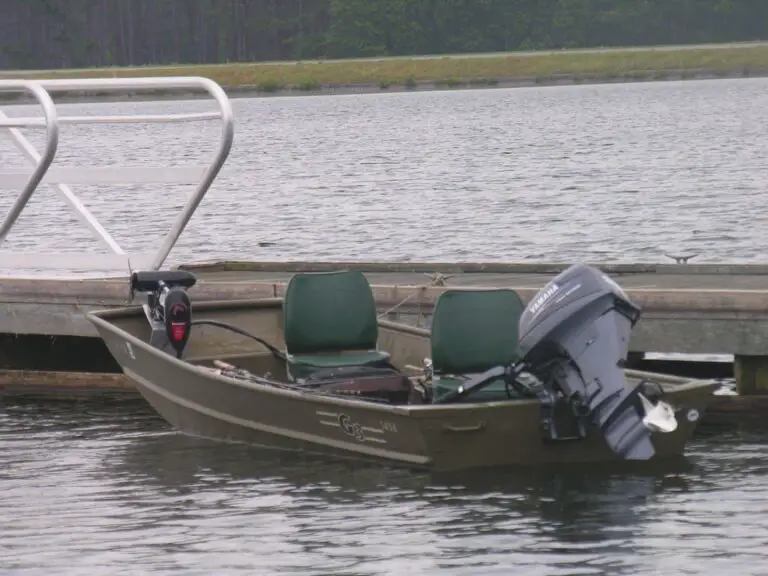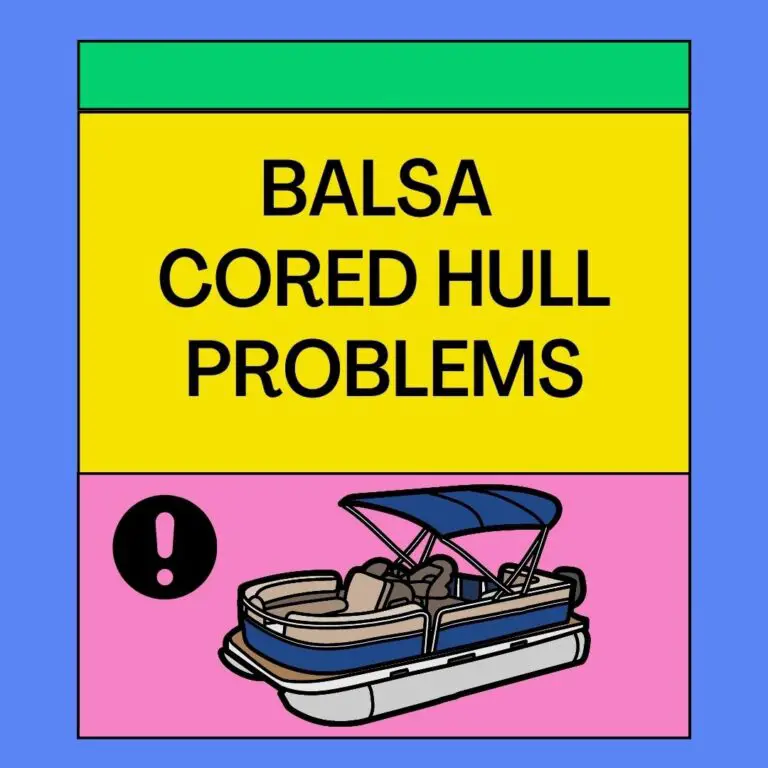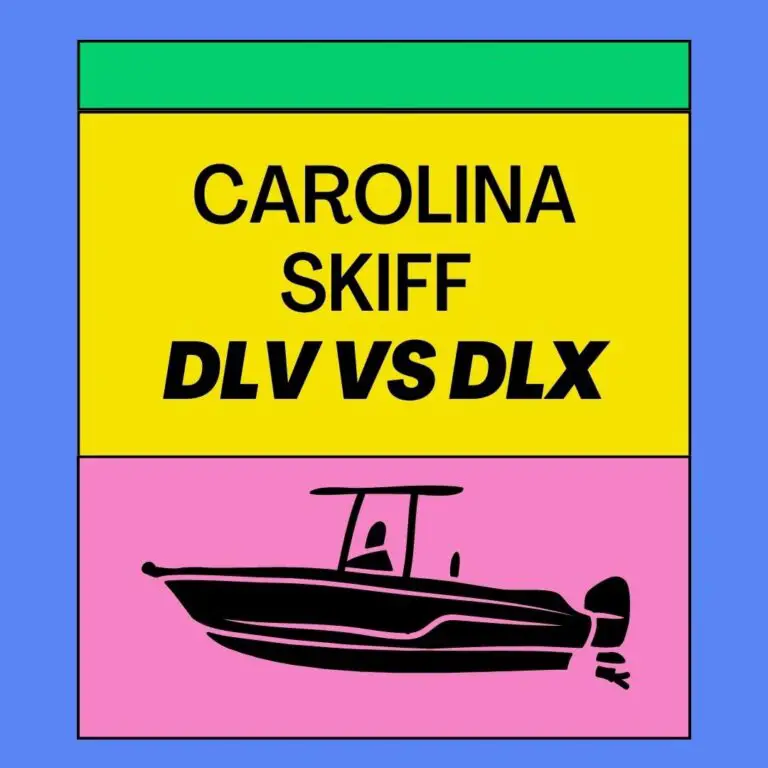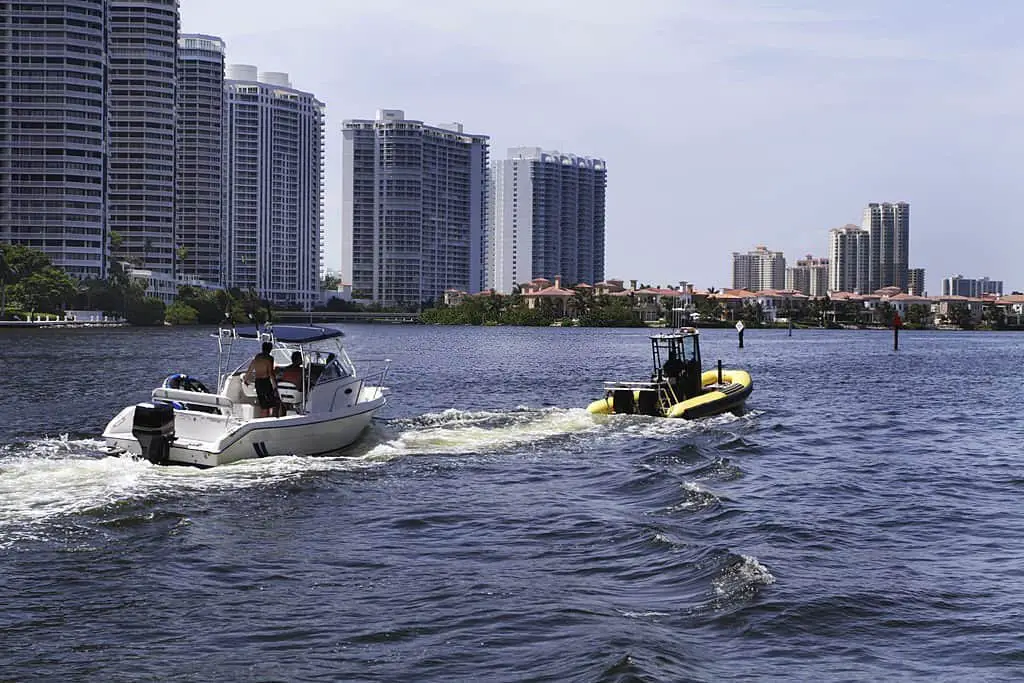
How can you tow a skiff behind a boat? You may have seen such a thing while boating. Yet, doing it will be much thicker than it seems.
You have to secure the skiff properly, which is already hard. Moreover, there will be many challenges across the water, causing troubles and even dangers.
Today, we will give you step-by-step instructions for ‘towing skiff behind boats’. Let’s follow our post without missing anything!
Essentials Of Towing Skiff Behind Boat
Here are four essentials to bear in mind before moving to the main part:
- If you tow a hard skiff, which often handles well in calm water, attach the painter at its bow, ideally six inches or more underneath the stem, to guarantee the bow stays high.
- If you tow an inflatable skiff, connect the points on the two sides of the bow with a towing bridle. This step helps the skiff pull straight.
- Go for the floating line to prevent the painter’s line from sagging below and tangling with the towing boat’s engine or rudder.
- Move the skiff’s outboard motor to a rail mount in case of strong waves. Otherwise, the waves will cause your skiff to capsize and destroy the outboards.
How To Tow Skiff Behind A Boat?
Towing a skiff behind a boat doesn’t mean you just need to tie two things. The following tips will show you how to do it properly.
Step 1: Empty the skiff
Remove equipment, including life jackets, rags, paddles, and external fuel tanks.
An outboard motor that weighs 60 pounds adds excess drag and puts more pressure on the skiff’s transom, towline, and connectors. So, detach the outboard too.
If the outboard is too hard to remove, tilt it upward. Then, it won’t contact the water. Attach the head to grips or pad eyes on the side to prevent the engine from flopping during the tow.
Step 2: Connect the skiff to the boat
A hard-bottomed, well-tracking skiff that features a padeye on the bow is easier to tie. You just need to attach one single line straight between the tow and the large boat for traveling short distances.
On the other hand, the inflatable skiff has two D-rings on each side. Attach the tips of a towing line to the rings to create a triangle that helps clear the bow about a few feet.
Pass the bridle through a bowline at the end of the line. The bridle now can slide easier while keeping the weight evenly spread between the rings. You can add a tiny block to keep the two lines from chafing.
Step 3: Monitor your speed
Tying your skiff to the boat is not the end of the process. Always keep an eye on it, particularly when the wind speeds up or the sea condition intensifies.
Think about your towing speed as well. Avoid towing a skiff too fast so that it rises to the air. Also, never haul in uncertain circumstances. If you have to, do it slowly.
Powered boats may accelerate a planing hull, whereas sailboats go slowly. The speed will increase the strain on each piece of the problem.
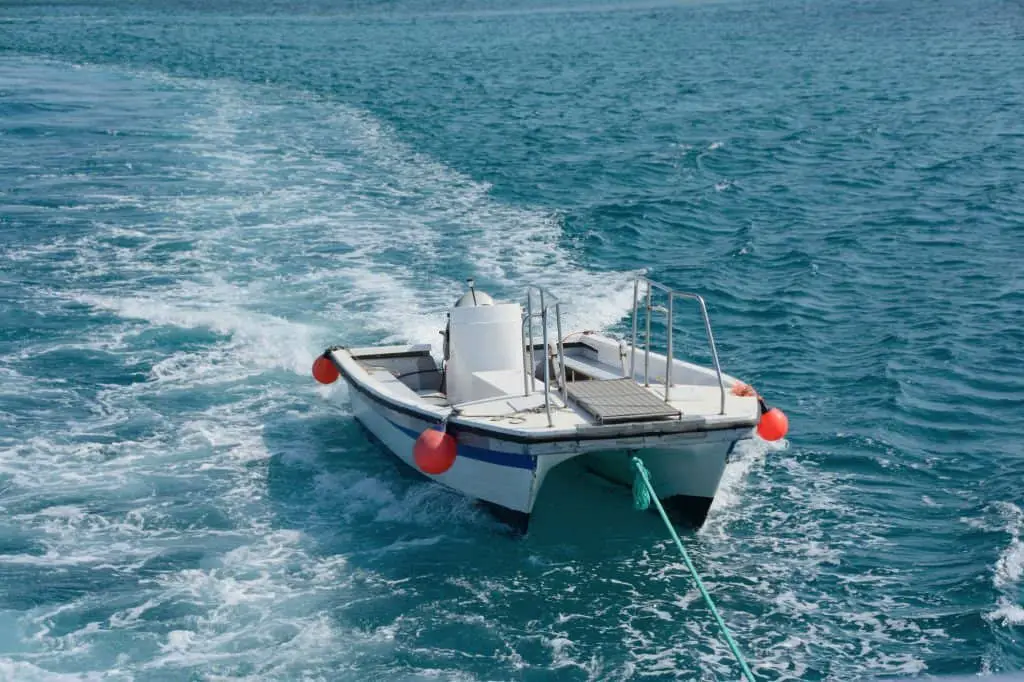
Tips For Towing Skiff Behind Boat In Rough Conditions
Towing a skiff behind a boat is not a set-it-and-forget process. You have a long rough trip to face when traveling on the water.
Three common problems may happen to your boat. Let’s check and learn how to solve them.
Following waves
The skiff browses forward due to approaching waves, possibly colliding with the boat. Another possibility is to turn the skiff, and the outboard motor hits the stern and damages something.
In this case, you can extend the painter to make the skiff go farther, recovering from each wave and falling back before clashing with the boat.
Another method is to set up a rope from the towing eye out to the sailboat’s rear quarters and tow the inflatable dinghy closer to the stern.
When you tighten the rope, the skiff bumps up against the stern and cannot turn. Despite having the bow elevated slightly above the water, some people always haul their inflatable skiffs in this manner.
Unless your skiff bow is snubbed tight and can stay high from the water, neither of these two solutions stops the waves from blowing the skiff and flipping it over.
Strong waves and winds
The skiff is at risk of turning over or filling up if it faces strong winds and waves, causing serious problems. Unfortunately, detaching the outboard from an inflatable skiff makes it more prone to flipping.
If the wind brings you trouble, splash some water into your skiff with a bucket to increase its weight. Thanks to the extra weight, your skiff can stay balanced.
To protect your inflatable dinghy from the waves and wind, you can tow it on the lee side of the boat. In this situation, you need to relocate the painter connector forward the beam so the stiff can nestle against the side.
You can also protect your hard-bottomed dinghy this way. But it must have a pre-built fender system.
Capsized skiff
The skiff may sink or capsize and fill with water. This problem causes a big drag that could be dangerous immediately.
The stress could force the painter to break or tear out the two eyes (s). At the very least, the skiff turns into a sea anchor that slows or even stops the sailboat.
So what can you do if your dinghy capsizes? There are three tips to handle this problem:
- Recover the flipped skiff
- Bring your skiff to the lee side of the boat
- Slow down your speed
As long as the dinghy doesn’t contact the forceful wind, it can move forward smoothly and stay balanced, easily catching up with your boat’s speed.
An inflatable skiff is simple to handle by hand. But if you have a hard skiff, you must drop the mainsail slightly, turn the boom, and winch up your boat using a block.
Read More: Mercury 250 Pro Xs 4 Stroke Problems & Everything You Need To Know
Conclusion
The best method for towing a skiff behind a boat depends on several factors, such as the type of the skiff and weather conditions. But you can be confident carrying out this task with our guide.
If you have difficulty hauling your dinghy, please let us know. We will help you out. Thank you for reading!

I’m Cindy, a free-spirited outdoor enthusiast. Since childhood, Our family frequently goes on weekend camps and my father, who was a skilled hunter, used to teach my siblings and me valuable things about wildlife survival. I made this blog to share my knowledge, experiences, and tips.


